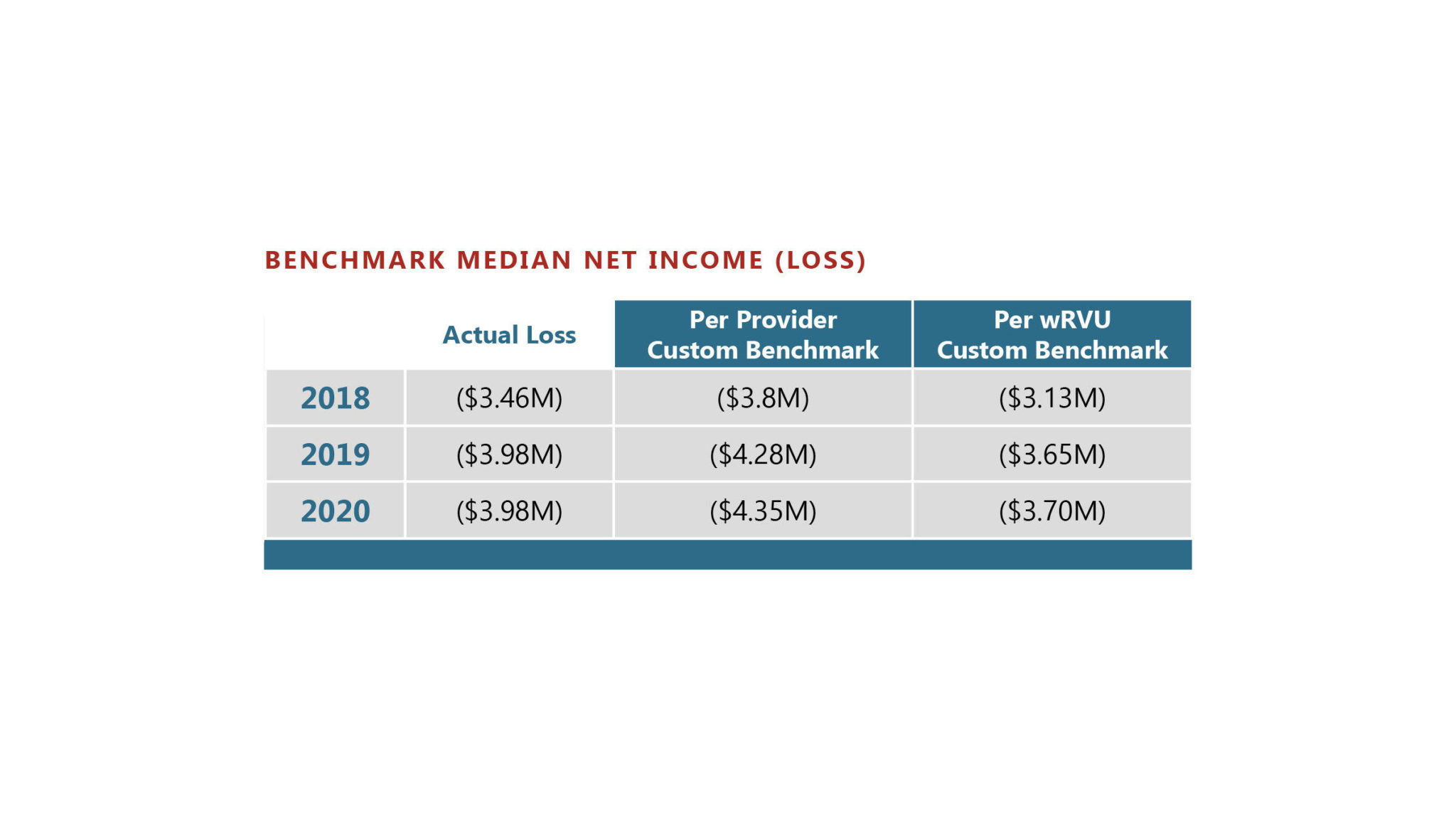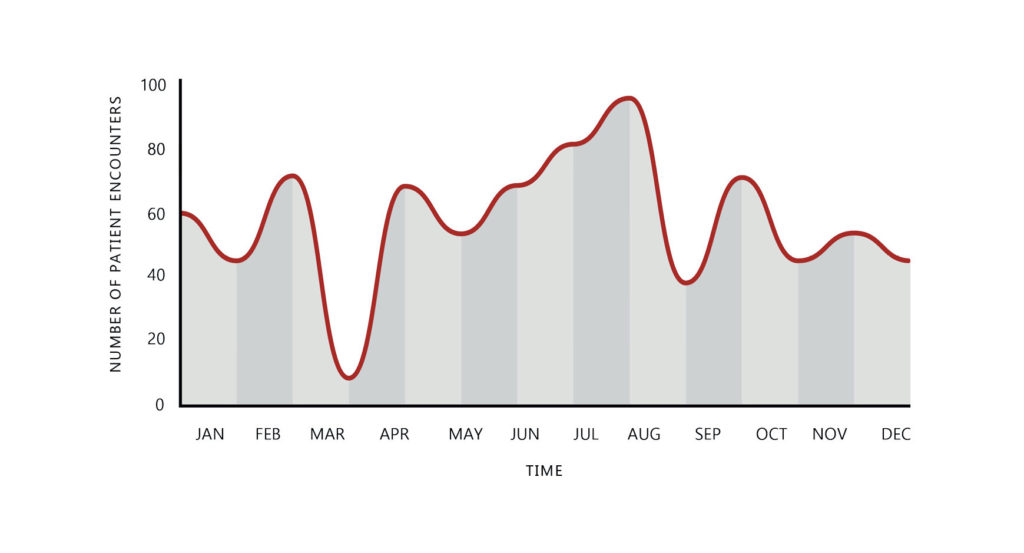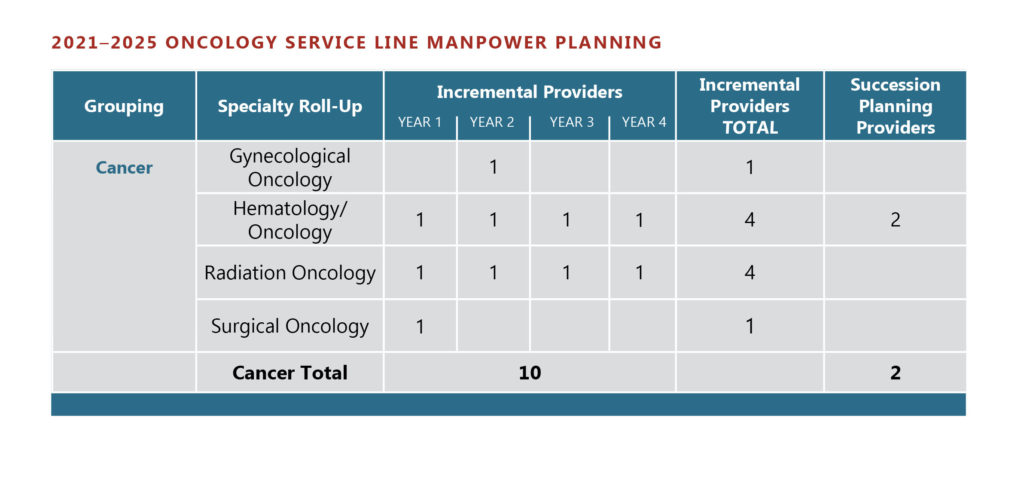
|
Download a PDF Version of the Article to Share With Your Team |
A CEO’s GUIDE TO BUILDING YOUR EMPOYED PHYSICIAN NETWORK: EVOLUTION OF HEALTHCARE KEY PERFORMANCE INDICATORS (KPIs)
While measuring your organization’s performance through data is key, it’s more important to make sure you are measuring the right data. By effectively identifying your Employed Physician Network Healthcare Key Performance Indicators, it allows executives and leadership teams to comprehensively understand the current state of their employed network, anticipate unexpected changes and highlight any areas that may require additional investigation. HSG can support your team in identifying the right KPIs based on your organizational objectives. Once proper measurement criteria for each KPI is defined, our experts build dashboards so that your team has insight to meaningful data to support ongoing KPI measurement.
Throughout the growth of your physician enterprise, KPIs for your organization will evolve. Our team of experts recommends eight categories that provide high impact information as you measure performance and determine opportunities for revenue growth or expense reduction. Several dashboard examples are included to help illustrate several priority KPIs.
1. NETWORK INTEGRITY
This measure of patient retention and leakage is crucial if your group is going to effectively coordinate care. HSG’s preferred measure is Patient Share of Care™. It measures patients who have a relationship with an employed primary care provider and the capture of revenue from that patient’s healthcare encounters.
2. SUBSIDY OF THE NETWORK
Every organization is measuring this; the change will be making it more visible to the organization by incorporating it into your dashboard of KPIs.
This dashboard is an example of the importance in measuring net income loss multiple ways to reveal critical insights. If actual loss is only compared to the per provider benchmark, performance appears positive based on the size of the employed network. When compared on a per wRVU basis, there is significant opportunity for reducing subsidies based on volumes.

3. PERFORMANCE ON RISK CONTRACTS
This KPI has two core elements: 1) spending on patient care vs. target (medical loss ratio in insurance terms) and 2) performance on quality indicators that are hurdles to receiving incentive payments. The measure for the spending is a percent of the target
4. PATIENT ACCESS
Your network should establish standards by specialty regarding how long it takes to get an appointment, and report exceptions and compliance. Third next available appointment by appointment type, by provider, and by practice is frequently used to reliably measure patient access.
5. QUALITY GOALS
Your network should have annual clinical quality improvement goals, often related to your efforts to
improve population health or risk contract performance.
6. PATIENT EXPERIENCE
Patient surveys remain the best measure of this issue. The performance of the physician practices must be measured, reported, and actively addressed.
7. VOLUME
Your KPIs should include primary care panel sizes or numbers of encounters – total or by type. These
metrics highlight volumes at the beginning of the care process, with associated implications for downstream revenue.
This dashboard example depicts the variaton of patient encounters over time.

8. PHYSICIAN MANPOWER
If you have done your manpower planning correctly, you have defined the number and types of physicians / advanced practice providers (APPs) needed to serve your community and implement your strategic plan. To measure the completeness of your network, the percent of target recruitment numbers for primary care, surgical specialists, medical specialists, and hospital-based specialties, is recommended.
This is an example of a manpower recruitment plan for an oncology service line for the next four years.

The importance of Healthcare Key Performance Indicators and dashboards related to your employed physician network is given a more thorough treatment in Chapter 11 of our book, Employed Physician Networks: A Guide to Building Strategic Advantage, Value, and Financial Sustainability and our whitepaper, A CEO’s Guide to Developing Physician Capabilities for the Future.
Contact HSG to talk to a representative about setting up your KPI dashboard tailored towards your employed physician network.
